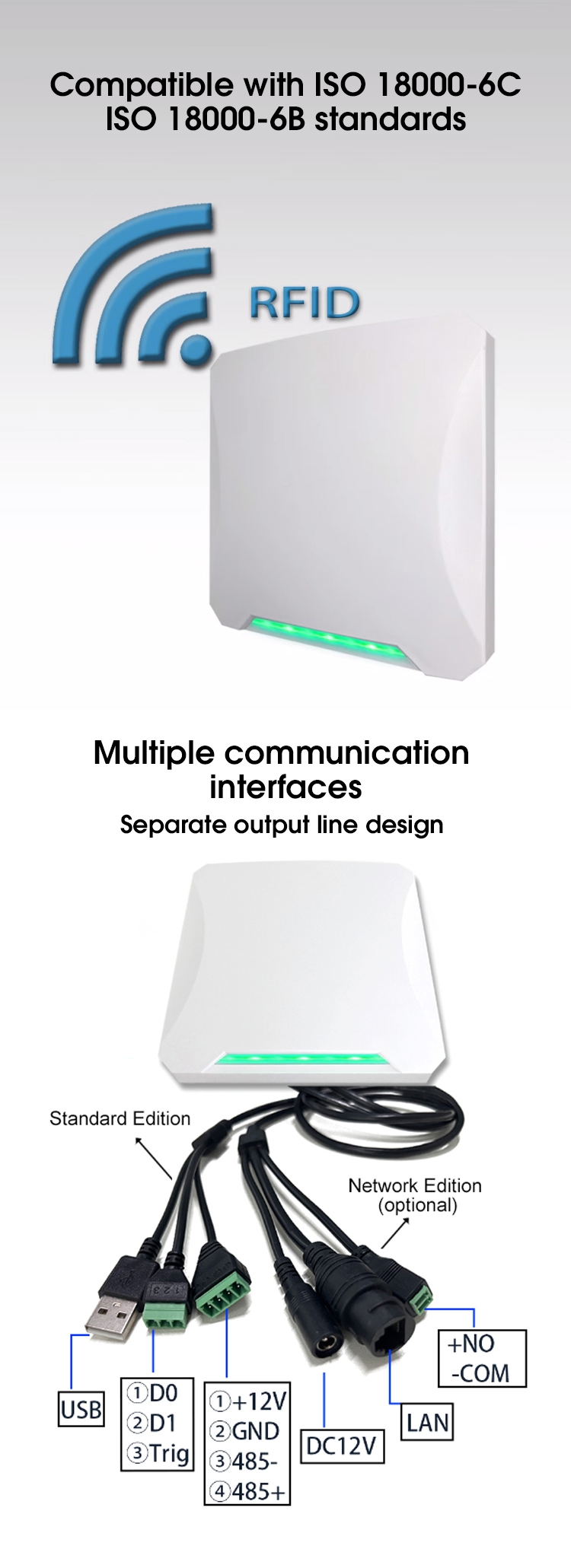Examining the Compatibility of uhf access control systems with Various UHF Cards and Existing Access Control Systems
UHF (Ultra High Frequency) card readers are widely utilized in various industries for their efficiency in access control, inventory management, and asset tracking. One critical aspect that users often consider is the compatibility of these readers with different types of UHF cards and existing access control systems. In this article, we will explore how UHF card readers fare in terms of compatibility and what factors influence their interoperability.
 Compatibility with Different Types of UHF Access Control System
Compatibility with Different Types of UHF Access Control System
UHF card readers are designed to read UHF cards, which operate within the frequency range of 860 MHz to 960 MHz. However, the compatibility of these readers with various UHF cards can depend on several factors:
Standard Protocols: Most UHF card readers and tags adhere to the EPC Gen 2 (ISO 18000-63) standard, which ensures a high degree of compatibility between different brands and models. Readers that follow this standard can typically read any UHF card that is also compliant with EPC Gen 2.
Tag Types: UHF cards come in various forms, including passive, semi-passive, and active tags. Passive tags are the most common and rely on the reader for power, while semi-passive and active tags have their own power sources. Most uhf rfid reader configuration software are designed to read passive tags, but some advanced models can also handle semi-passive and active tags.
Encryption and Security Features: Tags with advanced encryption and security features may require specific readers that can decode and process the encrypted data. It’s important to ensure that the reader supports the necessary security protocols for the tags being used.
Tag Form Factors: UHF tags come in various form factors, such as cards, labels, and embedded tags. Readers are usually versatile enough to read these different forms, provided they adhere to the standard protocols.
Integration with Existing Access Control Systems
For organizations looking to integrate UHF card readers into their existing access control systems, compatibility is a key consideration. Here are some factors that affect the integration process:
Communication Interfaces: UHF card readers typically support various communication interfaces such as Wiegand, RS-232, RS-485, and TCP/IP. Ensuring that the reader’s interface matches the existing system’s requirements is crucial for seamless integration.
Software Compatibility: The reader's software should be compatible with the existing access control software. Many UHF card readers come with SDKs (Software Development Kits) and APIs (Application Programming Interfaces) that facilitate integration with popular access control platforms.
Middleware Solutions: Middleware solutions can bridge the gap between 25 Meters UHF RFID Reader and access control systems that may not natively support UHF technology. These solutions can translate data and ensure seamless communication between different systems.
Firmware Updates: Regular firmware updates from the reader manufacturer can enhance compatibility with new UHF cards and evolving access control systems. It's important to choose readers from manufacturers that provide consistent and reliable updates.
Real-World Applications and Considerations
The compatibility of uhf access control system with different RFID Card UHF and existing access control systems opens up numerous practical applications:
Corporate Access Control: In corporate environments, uhf access control system can be integrated with existing access control systems to streamline employee access and enhance security. Compatibility with various card types ensures flexibility and ease of deployment.
Educational Institutions: Schools and universities can benefit from uhf access control system that integrate with their existing systems for student and staff identification, library management, and event access.
Healthcare Facilities: Hospitals and clinics can use uhf rfid reader configuration software for secure access control, patient tracking, and inventory management. Compatibility with different UHF cards ensures that the system can be tailored to specific needs.
Retail and Warehousing: Retailers and warehouses can leverage UHF card readers for inventory management and asset tracking, ensuring compatibility with existing systems to enhance operational efficiency.
Conclusion
The compatibility of UHF card readers with different types of UHF cards and existing access control systems is a critical factor for their successful deployment across various industries. By adhering to standard protocols, supporting diverse communication interfaces, and providing middleware solutions, UHF card readers can seamlessly integrate with existing systems. Understanding these compatibility aspects ensures that organizations can choose the right UHF card readers to meet their specific needs, enhancing both security and operational efficiency.
Author: Written by Ms.Anna Zhang from S4A INDUSTRIAL CO., LIMITED
Factory Address:Building S4A, South Third Lane, Qiuyuling Street, Zhangkeng Village, Hengli Town, Dongguan City, Guangdong Province Office Address:#601,floor 6 ,building 1,JINFANGHUA industrial zone, Bantian St. Longgang Dist. Shenzhen, PRC.
If you are interested in our products and want to know more details,please leave a message here,we will reply you as soon as we can.